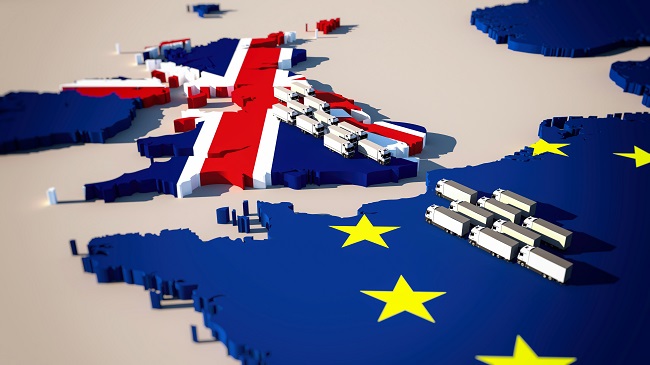
With the consultation period on the proposed new rules for importing goods to the UK –from the EU and the rest of the world – having recently ended, the Institute of Export & International Trade (IOE&IT) yesterday (24 May) ran a public webinar exploring the details of some of these new rules and examining what they will mean for traders around the world.
The new Border Target Operating Model (TOM) was published in draft form by the UK government on 5 April and was followed by a six-week period of consultation and engagement with the industry to comment and feedback on the proposed changes. This period
ended last week.
Speaking on the webinar, Kevin Shakespeare, director of strategic partnerships and international development at IOE&IT said there had been a good level of engagement with the consultation process from across the trade community.
“There has been a lot of interest from industry, and that’s been from all parts of industry, whether you are an importer or exporter, a wholesaler or a distributor, a haulier, freight forwarder or a port operator.”
That’s good because this TOM has an impact on the whole industry. There has been particular interest from the sanitary and phytosanitary part of the industry, but generally there has been a very strong level of engagement and some strong views as well.”
Naturally for such a major and relatively recent package of announcements, webinar attendees admitted to not knowing a great deal about TOM.
Asked what understanding they had of the proposed TOM, 41% claimed to have a “weak understanding” (30%) or “no understanding at all” (11%).
In an impressive demonstration of the educational ability of IOE&IT’s trainers and expert commentators, by the end of the webinar, these numbers had flipped, with 100% reporting they had a “strong understanding” (23%) or “some understanding” (77%).
SPS proposals
As outlined earlier in the discussion, much of the new border strategy and operating model is focused on biosecurity and the management and control of goods of plant and animal origin entering the UK.
Laura Williams, academy trade and customs consultant at IOE&IT, presented on all aspects of the proposed sanitary and phytosanitary (SPS) regulations, focusing on the new risk categories, how and when they will be imposed and what each category means
in terms of the checks and controls on imported goods.
She explained that the new model for risk assessment will be based on a combination of the nature and type of goods, but also the country of origin. And both aspects will be kept regularly under review.
This means, said Williams, that importers need to keep up-to-date with the current risk category for any goods they are bringing to the UK.
“It is important that importers understand they are responsible for identifying the risk category correctly and acting accordingly.”
Encouragingly, following Williams’s presentation, over half (56%) of webinar attendees reported that they felt “fairly confident” (38%) or “very confident” (18%) of the risk categories for the goods they currently trade in.
Just over a fifth (21%) were waiting to see the final list of categories, while a similar proportion (22%) reported they felt “unsure” of how the risk categorisation would apply to the goods they trade.
Groupage, trusted traders and safety and security
Peter Murphy, future border specialist at IOE&IT, took on the task of explaining what TOM will mean for groupage, with details of how consignments with goods from different risk categories would be treated at the border and what the new rules would mean for any mixed category consignments.
Murphy also explored in depth the proposed new Trusted Trader Schemes that are being launched as part of TOM, with the intention of reducing border checks and frictions without any loss of security.
The aim, as Murphy explained, is that the new schemes – Accredited Trusted Trader Scheme (ATTS), Authorised Operator Status and Technology Assurance Scheme (TAS) – will be operated by DEFRA and the port health authorities, rather than HMRC, which operates
the current Authorised economic operator (AEO) and Authorised consignee/consignior (ACC) schemes.
“The idea is that these new schemes are designed to be rolled out for SMEs as well as large traders,” explained Murphy.
“And it is worth noting that there will be pilot schemes set up, so small firms who fit the criteria can apply.”
